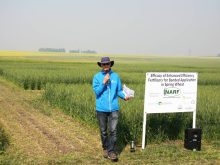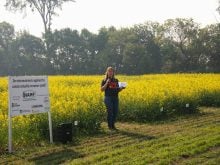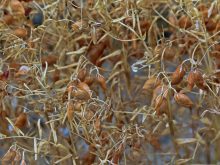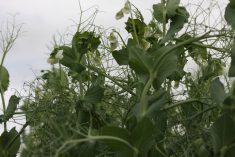WINNIPEG — Serious dollars have been committed to a serious problem for pulse growers — root rot.
Saskatchewan agriculture minister David Marit announced today $2.5 million in provincial and federal funding to find solutions for root rot in peas and lentils.
In addition, Saskatchewan Pulse Growers, Western Grains Research Foundation, Alberta Pulse Growers Commission, Results Driven Agriculture Research and Manitoba Pulse and Soybean Growers contributed another $1.7 million to the project.
Read Also

Farmers asked to keep an eye out for space junk
Farmers and landowners east of Saskatoon are asked to watch for possible debris in their fields after the re-entry of a satellite in late September.
“(This) will develop new options to manage root rot and will contribute to preserving and expanding the pea and lentil acres in our province,” says a Saskatchewan government release.
The investment was part of a broader announcement on research funding.
At today’s SaskOats annual general meeting in Saskatoon, Marit announced $14.7 million in crop research funding for 2024 through the province’s Agriculture Development Fund (ADF) and the Strategic Research Initiative.
“It’s $12.2 million for 56 research projects under the Ag Development Fund,” Marit said.
“ADF funding supports a range to topic s… from crop breeding and improving agronomic practices, obviously soil health … and adding value to commodities through processing.”
A detailed list of the 56 projects can be found on a Saskatchewan government website here.
The investment in root rot research is critical for the pulse industry as soil diseases such as aphanomyces become a massive challenge for lentils and pea growers.
“Aphanomyces root rot causes severe damage to the roots, causing infected plants to wilt and die prematurely. In wet years, high yield loss in peas has been observed under … high infections,” says SaskPulse’s website.
The crop protection industry and researchers are working on solutions, but right now the main option for growers is waiting.
Scientists have developed tools to calculate the risk of aphanomyces, but farmers with infected fields might wait six to eight years for spore counts to drop, before returning to peas or lentils.
Saskatchewan Pulse Growers said the provincial and federal investment is welcome news for the industry.
“The funding supports SPG’s highest priorities in research such as root disease, weed management and more,” said SPG chair Winston van Staveren, a producer from Creelman, Sask.
Sabine Banniza, a University of Saskatchewan plant pathologist, will lead the root rot project.
She will likely partner with other U of S researchers who have been searching for genetic resistance to Aphanomyces, and with researchers at Agriculture Canada and the National Research Council.
Tom Warkentin, a field pea and soybean breeder at the U of S, has discovered promising genes in older varieties of peas from other parts of the globe.
Those genes could provide partial resistance to root rot.
“We’re trying to bring in those specific (genomic) regions … into varieties that are performers in Western Canada,” Warkentin said.
“Some promising lines are now in registration trials.”
Contact robert.arnason@producer.com


















